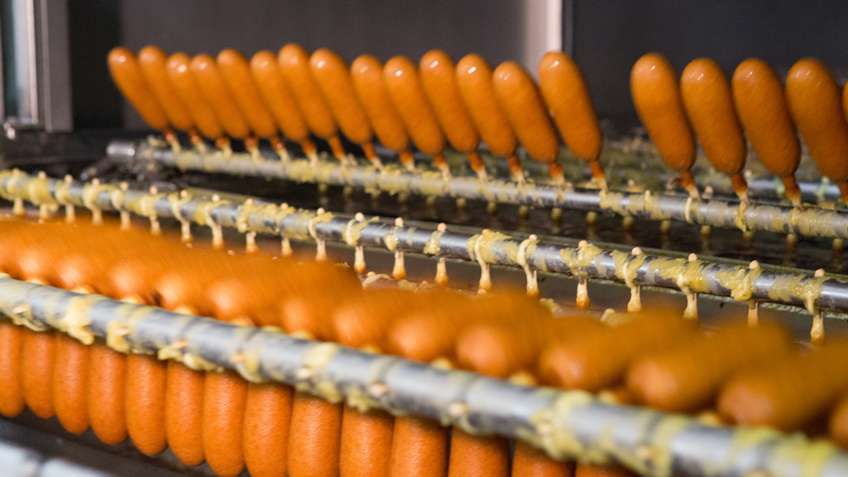For example, the system has been set up to pull specific information from a fryer; recording temperature at various levels and locations within the fryer to ensure all product is cooked evenly.
This information is displayed via dashboard, so an operator can view all the active fryers at once or drill down into one specific fryer if an alert is noted.
If a new fryer is added to the line, it can be added to the dashboard in a matter of minutes, copying over the existing tags and the related KPIs developed for the other fryers.
In total, the Haltom City plant will be monitoring approximately 1,500 data points across cooking, sticking, battering, frying, freezing and packaging.
Additionally, the team has extended this solution with Microsoft® Surface™ tablets running the FactoryTalk VantagePoint KPI mobile app for Windows® 8.1.
Operators and value stream managers on the fl oor are now able to monitor any area of production – packaging status, cook temperature and frying capacity – in the palm of their hands.
Armed with anytime access to real-time and historical production data and trends, operators can see where there are problems, where problems might potentially arise or where additional capacity exists to increase production or run an alternative product.
When new regulations under the FSMA are fully implemented in 2015, FactoryTalk Historian software will be essential in improving traceability and reporting for the FDA.
The increase in data collected by Historian software, and reported and shared via VantagePoint software, helps the plant track exact serial numbers, date and time-stamped detail on which SKU numbers came off each specific line.
If the plant ever had an issue with food safety, alerts are in place that allow managers to immediately pull up data to check how many cases may have been affected and their specific product serial numbers.
Mobilizing the solution, unties area managers from the machine or control-room monitors, allowing them to better manage their zones and collaborate across production zones.
“Our value stream managers no longer have to wait for Excel-style, manual reporting at the end of each shift to make production decisions,” Williams said.
“With the FactoryTalk solution, managers can show summarized, contextualized information on the tablet directly to the operators on the plant floor. Those teams can now immediately see how their actions are affecting quality-assurance goals. Understanding these cause-effect relationships has been revolutionary for our teams. We are seeing functions work more collaboratively toward higher-level plant goals rather than focusing on the individual goals that only impact their area of production.”
This deeper insight has helped Hillshire decrease inedible product and waste goals at the plant to 0.8 percent, which translates into savings of nearly 5.5 million corn dogs annually.
“We now have operators thinking through important ‘what-if scenarios.' When one production area has capacity, they're looking to fi nd ways to make adjustments across functional areas to help optimize production,” added Williams.
“The Manufacturing Intelligence solution from Rockwell Automation and mobility from Microsoft has been crucial in improving production, while helping us meet quality standards,” he continued.
“When new regulations come into play in 2015, it will help our plant maintain our exceptional quality and food-safety record.”
The results mentioned above are specific to Hillshire Brand's use of Rockwell Automation products and services in conjunction with other products. Specific results may vary for other customers.

